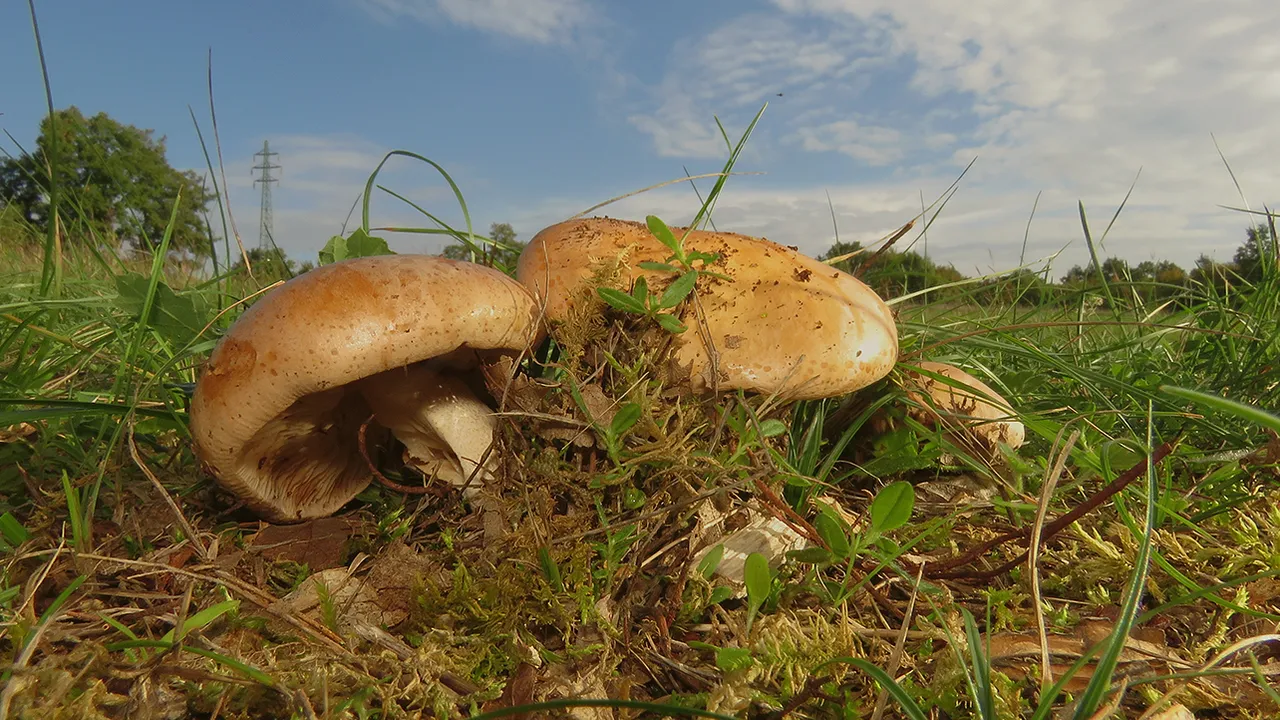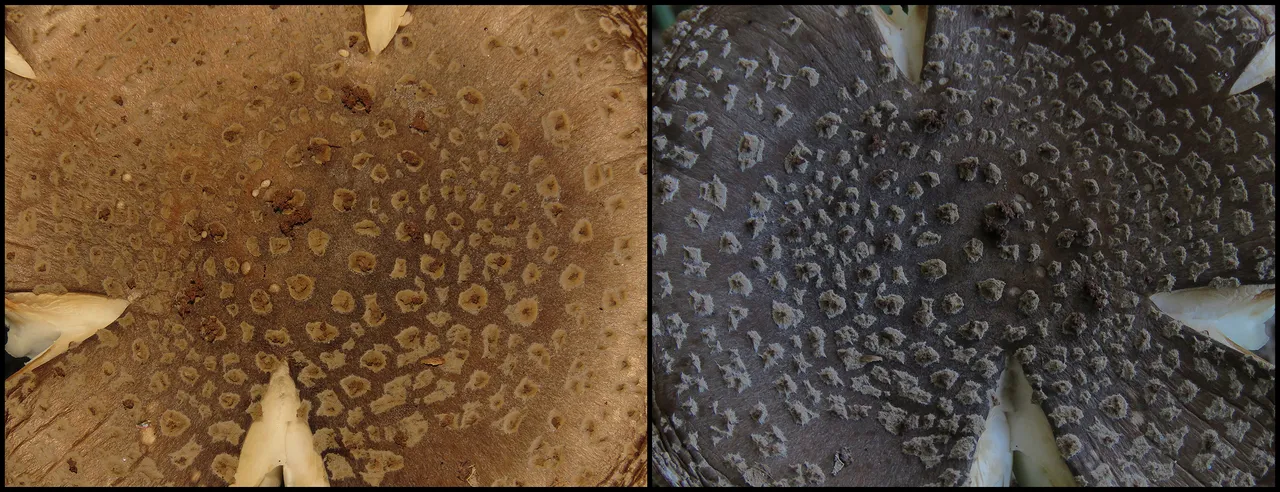On the tenth of October this year, I drove about fifty kilometers to spend an hour or two in the rural area between the towns of Svetvinchenat and Zminj.

I found a nice variety of mushrooms ...
... so today, almost two months later, I finally decided to organize those findings and published them as a contribution to FungiFriday by @ewkaw
Before continuing, I would like to say that a few weeks earlier, on the 16th of September, I was searching for mushrooms in exactly the same place. I found a nice variety of mushrooms on that occasion as well, and I published a Fungi Friday post that same day, but the species there are different. The following link will take you to that old post if you wish to go there.
@borjan/mushrooms-on-the-edge-of
I put the link here because I think that observing how the place can change in a relatively short period of time with old mushrooms disappearing and new ones taking their place on the scene, could be fairly interesting while comparing the two posts.
With that said and out of the way, let's continue ...
Here you can see a small group of poisonous Amanita pantherina mushrooms.
Five or six meters further, while walking along the edge of the forest, I came across this beautiful Coprinopsis picacea inkcap. In young fruiting bodies, the egg-shaped cap is slightly shaggy and completely white. As the mushroom grows and the cap is slowly spreading into a shape that resamples a half-opened umbrella, the white layer on the top of the cap breaks into small, white patches on the dark brown background. The size and distribution of the shaggy white fragments vary from mushroom to mushroom. Not far from there, maybe another five meters or less ...

... I found another Amanita pantherina. In this one, the cap was completely spread and developed.
The flat top of the cap gave me an opportunity to get a clear, uniformly sharp photograph of the pattern on its surface. Like in all amanitas, the fruiting body of the Amanita pantherina emerges from the egg-like structure called the volva.
As the mushroom develops and spreads its cap that envelope gets broken into pieces. In this species, the remains of the volva look like warts, very different from those on the Amanita shown in the post from the 16th of September.

Here you can take a look at the setting. The meadow and the forest.
The withered mushrooms shown in this photograph were found in the middle of the meadow.

These are the edible Marasmius oreades mushrooms. The days were warm and sunny, and a gentle wind was blowing, so the mushrooms in the open spaces were getting dry & shriveled quickly.
Here you can see the scene from a bigger distance and a different perspective.

In the same area, more or less in the middle of the meadow, I also found a bunch of puffballs.

These Lycoperdon marginatum fruiting bodies were ready to release the spores. The mushrooms that you'll see in the following photograph ...

... were photographed closer to the line of trees on the edge of the meadow.

Here you can see the same mushrooms, but you can see them from a different angle. I wasn't able to identify these mushrooms.

Here you can see another trio made of mushrooms of the same kind. It seems that these fruiting bodies love growing in groups of three.
About twenty meters further along the edge of the meadow, I came across a considerably larger group of mushrooms.

And here again, I wasn't able to find out the name of the species. In the following photograph ...

... you can take a look at the scene from ground level. This angle reveals the gills under the cap. Not far from these mushrooms, just a couple of meters or so ...

... I noticed some big mushrooms scattered around the area very close to the trees on the edge of the forest.
These are the Lactarius scrobiculatus fruiting bodies.

Like all mushrooms from the genus Lactarius of the Russulaceae family, the Lactarius scrobiculatus fruiting bodies exude a milk-like liquid when cut or broken.

Here, you can see a pretty large, old, and partially rotten Lactarius scrobiculatus that grew under one of the oaks on the edge of the forest.

A couple of acorns and a leaf or two ended up on the top of the cap.

In some places along the edge of the forest, always in the shade provided by the trees ...

... I found plenty of beautiful droplets ...

... on the fallen leaves.

In the same area, surrounded by the brown foliage fallen from the oaks, there was this Russula vesca mushroom.

Here you can take a look from above and see the vivid color on the top of the cap. While I was photographing the Russula vesca ...
... a Cheiracanthium erraticum spider crawled out of the leaf litter.

A bit later, a couple of meters into the forest, I found a mushroom well - hidden among the ivy and the fallen leaves. It didn't look very photogenic when seen from above, but ...
... but from the ground level, this Agaricus silvicola was a joy to photograph.

Soon I found a pretty big droplet that stood out from the crowd, took this photograph, and then ...

... I walked directly to my car parked by the side of the unpaved road that leads into the forest. Before driving away, I photographed another Russula vesca that grew in that area, very close to the car.

And that's it. I don't have any more mushrooms to show, so the post must end here.
The following links will take you to the sites with more information about some of the protagonists of this post. I found some stuff about them there.
https://en.wikipedia.org/wiki/Amanita_pantherina
https://en.wikipedia.org/wiki/Coprinopsis_picacea
https://www.first-nature.com/fungi/marasmius-oreades.php
https://en.wikipedia.org/wiki/Lycoperdon_marginatum
https://en.wikipedia.org/wiki/Lactarius_scrobiculatus
https://en.wikipedia.org/wiki/Russula_vesca
https://www.inaturalist.org/taxa/337724-Cheiracanthium-erraticum
AS ALWAYS HERE ON HIVE, THE PHOTOGRAPHS ARE MY WORK.










